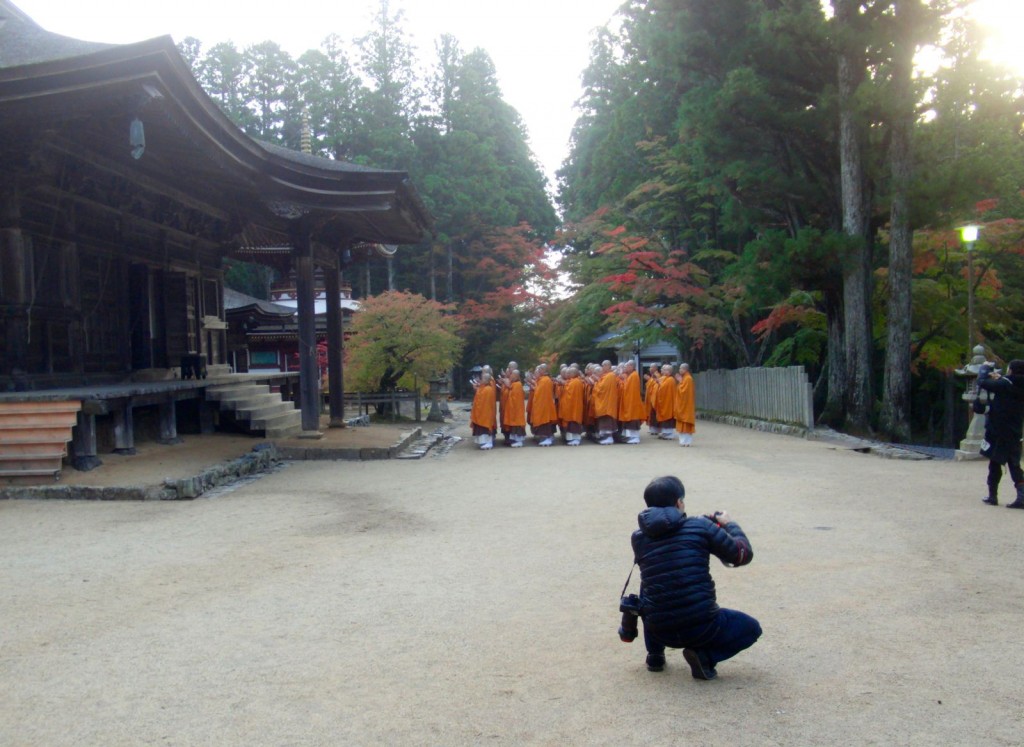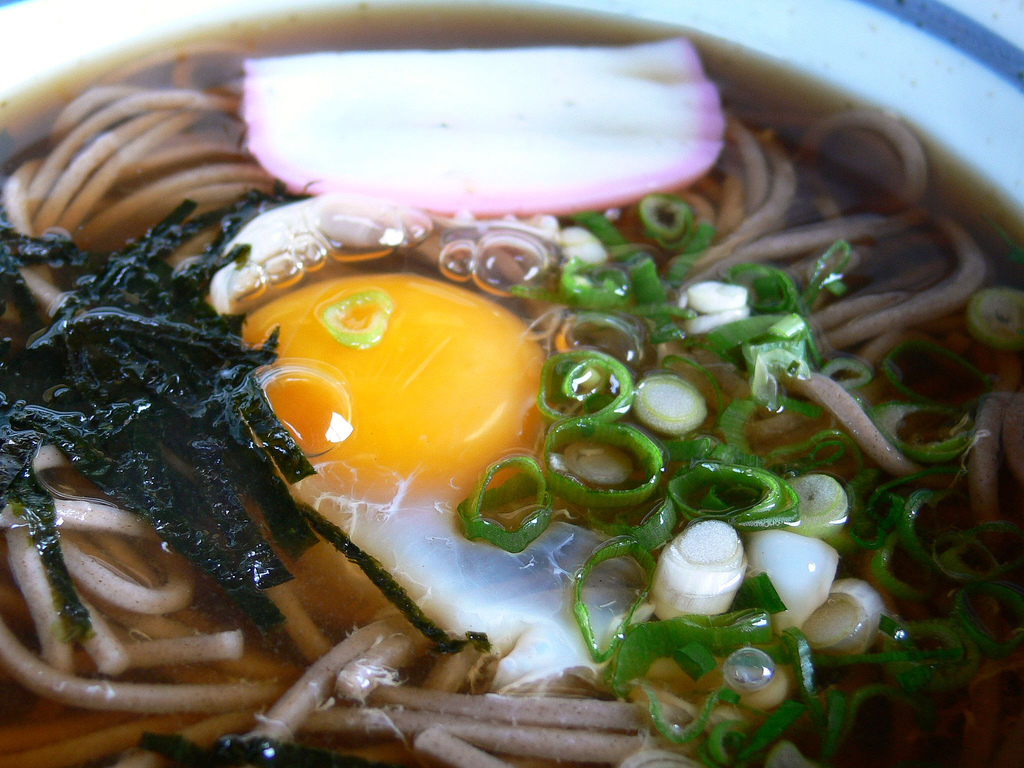10-30-13; Wednesday
In the makeup room this morning we learn that we were not the only ones bothered by mosquitoes last night. The makeup artist also experienced an unwelcome invasion. I had left the windows open at night to let in the fresh air, but the local mosquitoes smelled blood and went after us. I woke up at midnight because I heard the whine of a blood-thirsty beast even though I wore ear plugs. When I turned on the light, I could see three mosquitoes all in a row, drinking blood from Elsa’s arm. I slapped them and woke Elsa. I closed the window and then spent the next fifteen minutes or so hunting down the rest of them. Tiny bloodstains on the wall marked the battleground map. The enemy vanquished, I finally could go back to sleep.
We pack up, meet the crew in the lobby and turn in our key. As we step outside, a breath-taking sunrise with pink clouds greet us. What a glorious day! The drive to Tachi Taki (Tachi Waterfall) gives us amazing views of the ocean, sparkling in the sunshine. 
All along the way up the mountain, we see bulldozers trying to repair the damage left by the last catastrophic typhoon several years ago. Apparently Wakayama Prefecture has very unstable ground and there is often quite a bit of damage to repair after a violent rain storm. One indication of how extremely high the water in the Kumanogawa had risen are the sticks and logs lodged in the underside of a high bridge spanning the river.  It looks as though some of the riverside buildings have been recently damaged in the last flood. The “Peace Boat” website gives a thorough explanation of the extensive damage that Wakayama had to endure in the great typhoon and flood of 2011. Click on “Peace Boat Disaster Relief Volunteer Center” for more information.
It looks as though some of the riverside buildings have been recently damaged in the last flood. The “Peace Boat” website gives a thorough explanation of the extensive damage that Wakayama had to endure in the great typhoon and flood of 2011. Click on “Peace Boat Disaster Relief Volunteer Center” for more information.
We finally reach Nachi Taki which is an astounding waterfall that reminds us of some places in Yosemite. The pounding water casts shadows on the rock beside it creating horses of spray galloping down the rock. 

We stop to buy little 100 yen saucers to catch the water spurting from the mouth of a bronze dragon. As this water is routed through from the flow of the waterfall, the pressure occasionally drops and then gushes making it tricky to get a saucer-full of water to drink. The dragon water is supposed to give one long life like a dragon.
 

After the photo shoot, we stop at the omiyage shop to buy a few trinkets. I find a lovely bell on a red cord in the shape of a crow’s head. Back into the vans we pile to drive to the nearby Kumano Nachi Taisha, a famous, bright red temple. We stop to take photos on the wide stone walkway that leads towards the front of the temple.


Back down the mountain we go to take some more photos at a previous location, Daimon-zaka, where the path is now slick from yesterday’s rain. A few tourist groups start up the steps past our shooting location, but all of them decide to turn back early. The tourists are elderly and the stones are slippery and treacherous. The photographer likes the look of the stone steps, dark with moisture, so he takes a few more pictures.

Photographer with Director planning the day’s shooting.
Our next stop will be Mizunomi-Ouji, or Drinkwater Road which is near the “Bowing Down Road†that we visited on Monday. Everyone sleeps on the way excepting the driver and myself. We wind along beside the aqua-colored river with its wide gravel bed, green forested hills and the occasional dramatic cliff. We drive along route 168 towards Gojo, and finally arrive at the trail access. 


Mizunomi-Ouji is a mossy, Sugi-enveloped trail studded with green stumps and tiny mushrooms. We walk along the trail looking for good patches of leaf-filtered light. Elsa and I are told to walk on ahead while the ad director and the entire crew follow along behind. “Do you ever get the feeling,†says Elsa with a smirk, “that you’re being followed?†Up the trail and back we go, marveling at tiny purple flowers, sparkling spider webs and towering sugi trees.
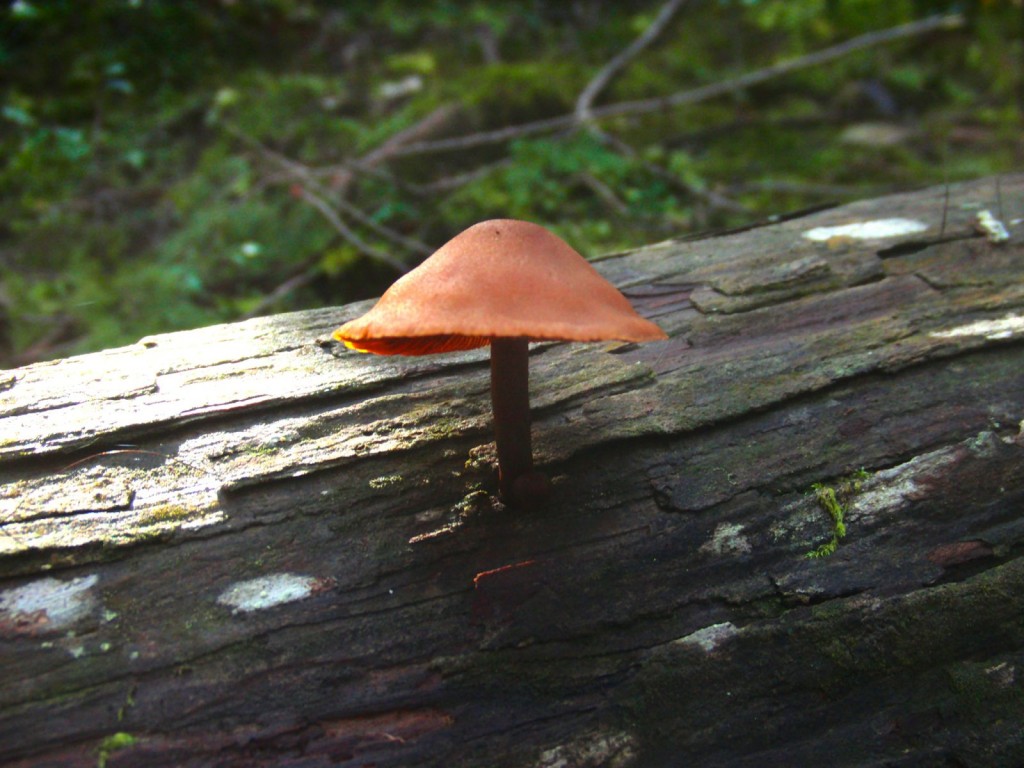
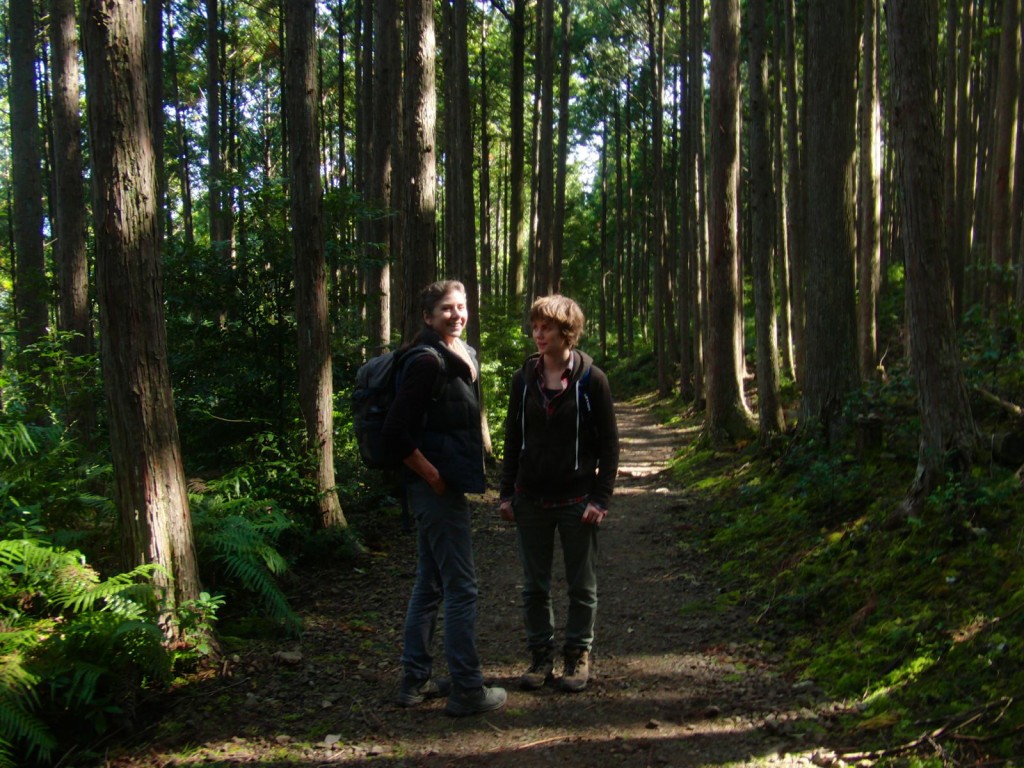
Massugu sugi
Mori de matte imasu
Shiko atsume
真ã£ã™ãã™ãŽ
森ã§ã¾ã£ã¦ã„ã¾ã™
æ€è€ƒé›†ã‚
(Small haiku attempt. Be patient with my growing… An old young seedling.)

We stop at a charming little café and B&B along the road on our way back down the Kumanogawa called the “Café Hongu.†The bread they serve with the pumpkin soup is as wonderful as my mom’s homemade bread. I am amazed at how good it is and I compliment the owner on her scrumptious food. In their homey gift shop, I find some delicious apple butter and some “Hot Love†tea to bring back with me as omiyage.
In their homey gift shop, I find some delicious apple butter and some “Hot Love†tea to bring back with me as omiyage.
On the drive back we notice a stretch of the river where a sediment-laden tributary joins the main trunk. There, the river runs with two colors of water, sharply divided down the middle. The far side of the river runs aqua ice blue and the near side is light brown. Another striking contrast along the way is a field of glowing white Pampas grass with a brilliant scarlet sprig of sumac poking its head out over the top. The colors are changing faster now that the weather has gotten colder. 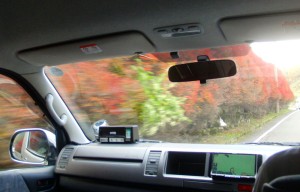


We drive through Koyasan once more and turn into a narrow alley with a traditional Japanese entrance at the end; a different ryokan but this one is charming as well. The building is very old with a maze of indoor hallways that are open to the cool night air and lead us past small rock gardens. After we have found our room, I am afraid that if I wander away, I will not be able to find my room again. 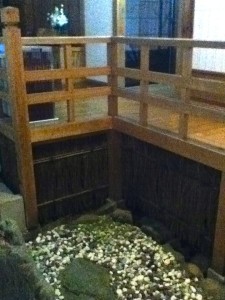
 Thankfully, we find the large tatami room which is the dining hall and we do find our way back to our room. We burrow under the poofy covers and fall quickly asleep. It’s been a long day.
Thankfully, we find the large tatami room which is the dining hall and we do find our way back to our room. We burrow under the poofy covers and fall quickly asleep. It’s been a long day.









